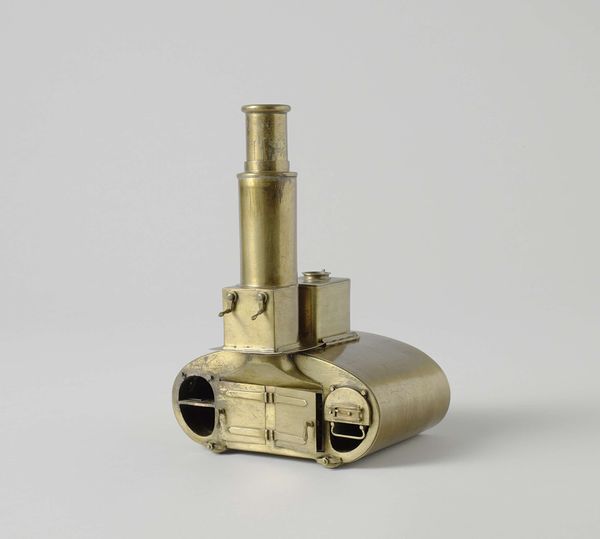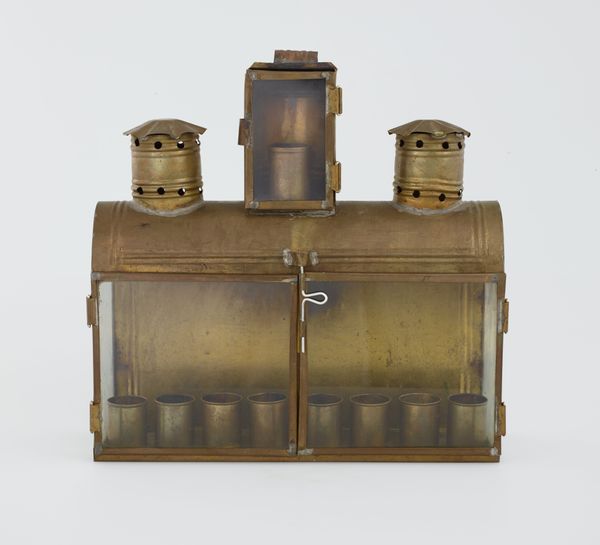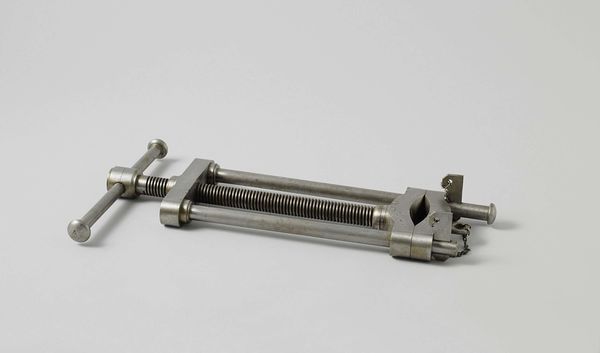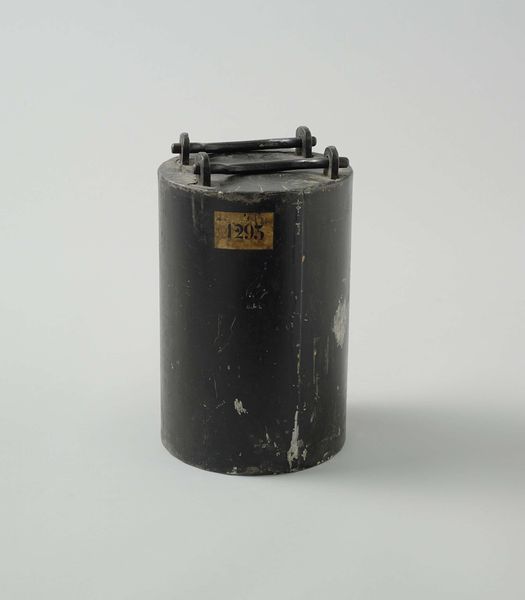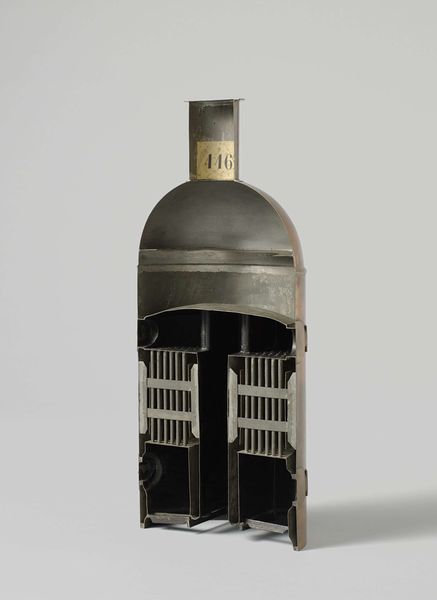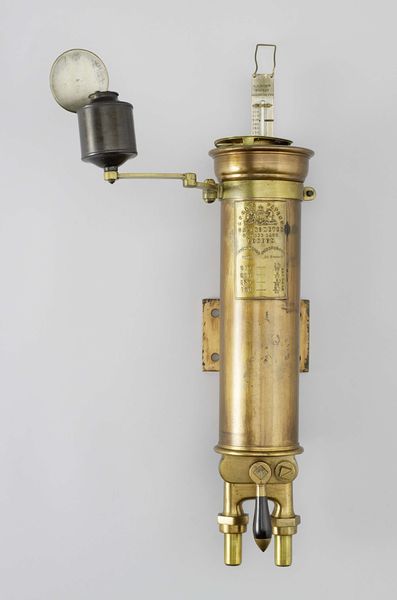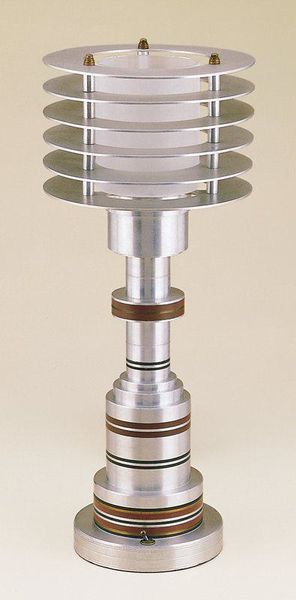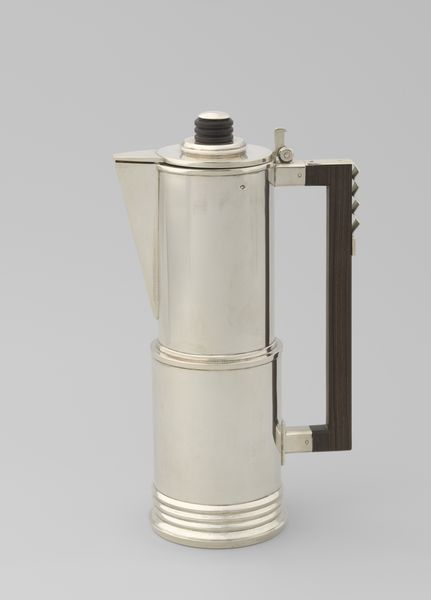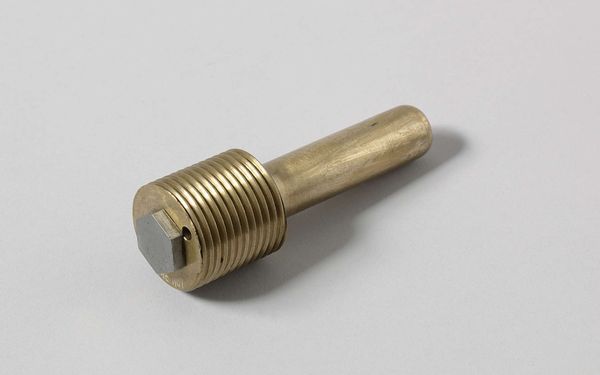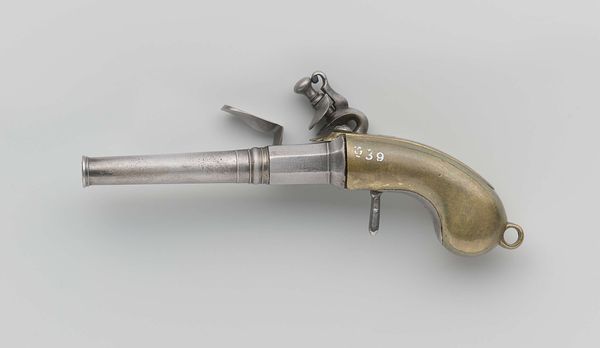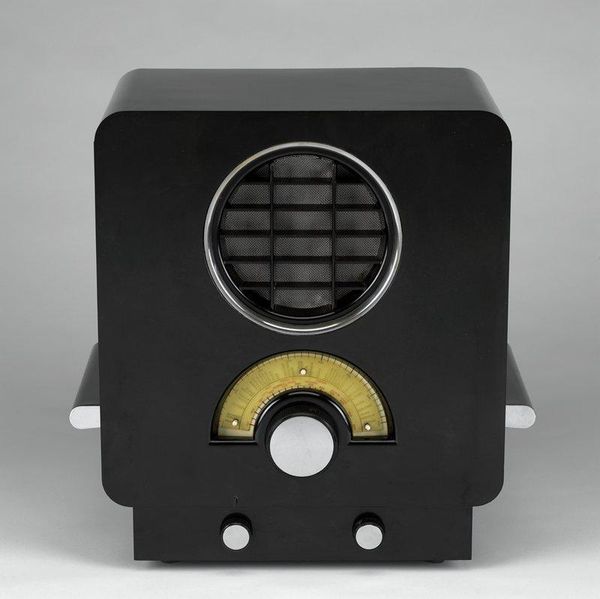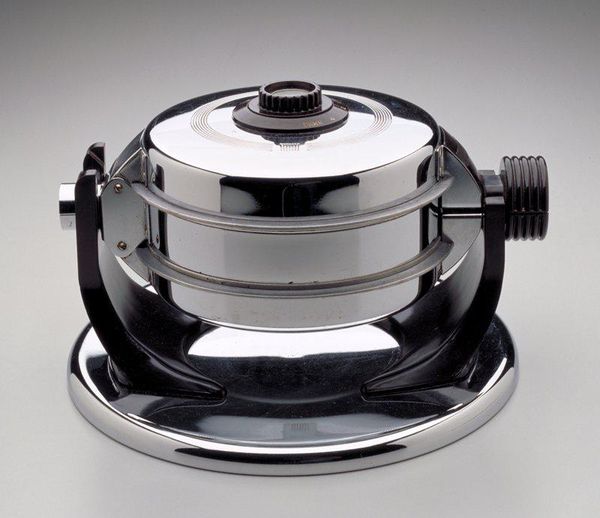
metal, sculpture
#
metal
#
sculpture
#
history-painting
#
realism
#
statue
Dimensions: height 36 cm, width 16.3 cm, depth 5.5 cm
Copyright: Rijks Museum: Open Domain
Editor: Here we have a metal sculpture entitled "Model of a Purifier for Naval Boilers" created in 1864 by an anonymous artist. It strikes me as very austere, almost brutally functional. How do you interpret this work beyond its immediate utilitarian purpose? Curator: That's a great starting point. Beyond its function, consider the historical context: 1864, a period of intense industrialization and naval expansion. This model speaks volumes about the era's priorities – the relentless pursuit of technological advancement, particularly in the context of warfare and colonial power. The anonymity of the artist also raises questions. Who was making these objects? Were they celebrated, or were they simply cogs in a larger machine? Editor: So, the anonymity isn’t a coincidence; it’s tied to the nature of labour at the time. The individual wasn’t important. It’s almost dehumanizing. Curator: Precisely. Think about the socio-political implications. This object embodies a system that prioritizes efficiency and technological dominance over individual expression or human cost. What does this say about power structures? Who benefitted from this technology, and at whose expense? Editor: It’s not just a purifier; it’s a symbol of power. I was thinking of it as an isolated object but seeing it as part of the broader 19th-century naval and colonial ambitions changes my whole perspective. The absence of the artist’s signature now speaks volumes. Curator: Exactly. Considering the sculpture in the light of gender studies, what might be suggested by the lack of any connection to women? Who designed it and operated such naval boilers? It really asks a lot of intersectional questions. Editor: I didn’t even think to go there. I guess this reminds me to look past face value and think more critically about historical, sociopolitical contexts. It opens up a new way of appreciating art for me. Curator: Indeed. Hopefully it will help guide you in looking for clues, narratives, and perhaps even hidden power structures woven into art from any period.
Comments
No comments
Be the first to comment and join the conversation on the ultimate creative platform.
